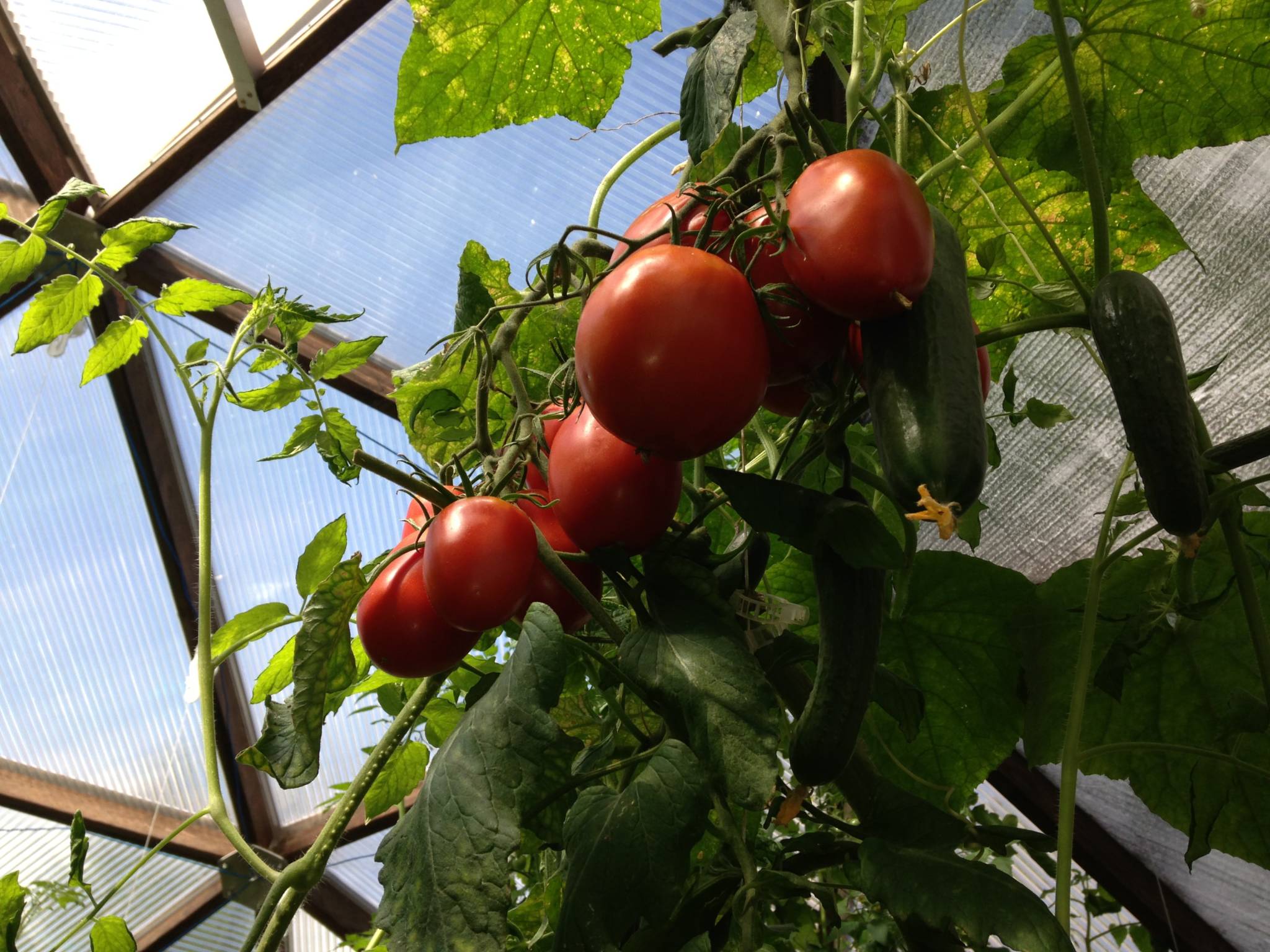
Optimize micronutrients by eating fruits and vegetables immediately after harvest

Shannon, the Farmer Apprentice with GoFarm, shared some greens with me from her first harvest in their 26’ Growing Dome Greenhouse. Excitedly, I immediately took them home and prepared a huge salad for my family for dinner. It tasted incredible! We always encourage visitors to our Growing Domes in Pagosa Springs to grab food straight off the vine and taste for themselves. Kids faces light up when they taste a fresh carrot, grape or tomato.

There are so many benefits to eating vegetables fresh from the earth. Taste, nutritional value and saving trips to the grocery store. Food travels hundreds, if not thousands, of miles before it makes it to the grocery store shelves and loses critical nutrients along the way. Being able to eat fresh fruits and vegetables year-round has added benefits given the short growing season here in Colorado and other extreme climates.
A famous study done by Penn State University found that spinach kept at 39°F retained only 53 percent of its folate and carotenoid after eight days. When it was kept at higher temperatures, the spinach lost its nutrients at an accelerated rate. At 50 °F it took six days for the spinach to lose 47 percent of its nutrients and at 68 °F it took four days.

Another study from UC Davis researched how to Maximize the Nutritional Value of Fruit and Vegetables.
“Vitamin C is water soluble and sensitive to heat, light, and oxygen, making it susceptible to loss during both home cooking of fresh fruits and vegetables and thermal processing. For that reason, loss of vitamin C is often used as an index of nutrient degradation. Research indicates that as long as fresh products undergo minimal storage and are handled at proper temperatures, they are superior to processed products in terms of vitamin C content. However, vitamin C degrades rapidly after harvest, and this degradation continues during storage. Vitamin C losses in vegetables stored at 4°C (39°F) for 7 days range from 15% for green peas to 77% for green beans. Refrigeration slows deterioration of vitamin C, as demonstrated in the case of broccoli, where losses after 7 days of storage were 0 at 0°C (32°F) but 56% at 20°C (68°F). It should be noted, however, that 20°C (68°F) storage of broccoli for 7 days is atypical and would result in a wilted, yellowed product that would in all likelihood not be consumed.”
UC Davis Maximizing the Nutritional Value of Fruits & Vegetables
All of these nutrients are necessary for human health. The same also applies to the flavor and medicinal value of fresh culinary and medicinal herbs.

Many studies have also found that the nutritional value of agricultural products has decreased rapidly over time due to degrading soil health, premature picking, seed quality and increased use of fertilizers and pesticides.
A landmark study on the topic by Donald Davis and his team of researchers from the University of Texas (UT) at Austin’s Department of Chemistry and Biochemistry was published in December 2004 in the Journal of the American College of Nutrition. They studied U.S. Department of Agriculture nutritional data from both 1950 and 1999 for 43 different vegetables and fruits, finding “reliable declines” in the amount of protein, calcium, phosphorus, iron, riboflavin (vitamin B2) and vitamin C over the past half- century. Davis and his colleagues chalk up this declining nutritional content to the preponderance of agricultural practices designed to improve traits (size, growth rate, pest resistance) other than nutrition. The key to healthier produce is healthier soil.
Scientific American Dirt Poor: Have Fruits and Vegetables Become Less Nutritious?
Healthy Soils for a Healthy Life

Soil is truly the foundation of nutrition and is necessary both for plant growth and human health. A 2015 study by the Food and Agriculture Organization of the United Nations found that over 2 billion people suffer from micronutrient deficiencies, primarily caused by soil degradation and nutrient-poor soils that are unable to produce healthy food with all the necessary nutrients for a healthy person. To optimize soil health:
- Increase soil organic matter content
- Minimize tillage
- Keep soil surface covered
- Ensure Crop rotation
Taste = Nutrition
Have you ever bit into a tomato that had no taste whatsoever? Chances are the nutritional content of that tomato is also lacking. It is still better than eating a bag of potato chips, but it leaves you very unsatisfied. Take the Growing Spaces Challenge, and visit one of our domes to see for yourself. We also encourage you to start growing at home with a simple window box, or starter hydroponic, aeroponic or aquaponic kit. You will immediately taste the difference when eating fruit and vegetables straight off the vine.

Farmers Markets and Community Supported Agriculture are also great ways to reduce the time between harvest and dinner! Farm-to-table chefs also know the benefit of preparing food off the vine.
Shannon sold the rest of the harvest to a local farm-to-table restaurant* who were so grateful for the fresh, local bounty in the middle of winter!

*We are now donating all of the produce from the GoFarm Growing Dome and all of our Pagosa Springs domes to local food hubs.
